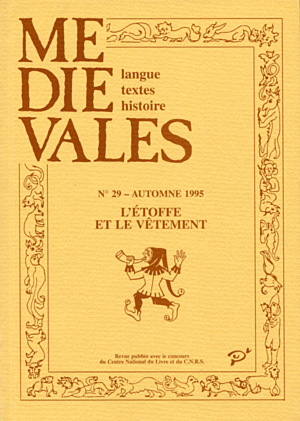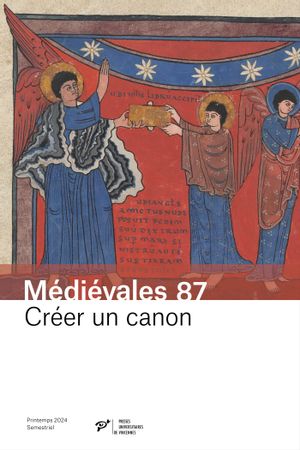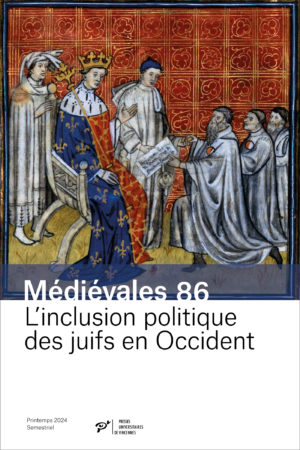Bruno ROY : « When the Pathelins purchased cloth »
This study is a commentary of the passages concerning clothes and fabrics in the Farce de Maître Pathelin. It assumes that the farce has been written in Angers, at the court of king René, and accordingly concentrates on the clothes of Triboulet, René’s fool, as author and player in the farce.
Jean-Pierre JOURDAN : « The letter and the Fabric »
The letter is a double symbol in its representation and in its Ianguage. The ambiguity of forms and meanings expresses this dua-lity between the signified and its signifier. The duplication of the letter is not merely ornamental. Doubling or redoubling the letter gives more intensity to its symbolic import. The signification of the letters derives from the moral, didactic, religious, cosmological or mantic properties they were endowed with. The letter whose form is as if ” inhabited ” expresses a mystery of presence. The mystery is also contained in the name which the letter identifies but which cannot be designated ” Amour ” (love) is at the heart of the letters, the ” âme ” (soul) of the cipher.
Michel PASTOUREAU : « Jesus the Dyer »
An old legend, transmitted by several Apocryphal Gospels treating of Christ’s childhood, tells how the young Jesus, placed as an apprentice to a dyer, spreads trouble and disorder by disobeying his master and proving himself incapable of learning such a profession. However, by performing a few miracles, Jesus brings the situation back to normal and arouses the admiration of his entourage. The study of this legend brings attention to the craft of the dyer, long looked upon with disapproval, if not with condemnation, in western societies. Because they change the color of fabrics, because they transform material, and because they seem to engage in diabolical operations, the dyers – like the blacksmiths – gave rise to distrust and fear. Moreover, in the textile towns, they were in constant conflict with other trades as well as with part of the population, which accused them of contaminating the air and soiling the river waters. Lastly, they were suspected of frequently breaking the rules and cheating the cus tomers by working with inferior and unstable dyes in place of fast and solid colors. In Latin as well as in the vernacular lan-guages, there is synonymity between tingere and fingere (by a play on words in English, one could say that to dye means to lie).
Odile BLANC : « History of Costume : The Undiscovered Object »
This article proposes a critical examination of the methods used and the objects treated by the history of costume, with a view to exploring new perspectives. Since Viollet-le-Duc’s manual, the main sources for this discipline have been inventories of war-drobes and contemporary works of art, and in a lesser measure chronicles, while literary texts have always been suspected of betraying reality. Contemporary images, however, are not pho-tographs of reality, nor are chronicles documentary accounts, and as for the rich terminology of the inventories, it is not pre-sented in the form of a dictionary. The history of costume, by limiting itself to reconstitution, also deprives itself of a means of understanding the imaginative spirit at work in these docu-ments. The disregard of literary texts is, here, significant. By passing over the discursive mode of the different writings on attire (by refusing them their status as texts), one ignores how contemporary people perceived and expressed their relation to appearance, and consequently, the concerns that were there involved.
Laurence GÉRARD-MARCHANT : « Counting and Naming Fabrics in Florence in the Trecento (1343) »
A notarial record of 1343 known as the Prammatica del Vestire, whose computerized transcription is now in process, has already yielded information not only on the bulk of individual wardrobes judged as luxurious and taxed, but also on the fabrics and materials used, the prevailing textures of tunics and particolored surcoats, the possible applications of different ribbons (including precious ones of gold and silver), and textile patterns and hues. The fabrics listed are predominantly silks, but woollens are also detailed, probably because they were stitched with silk threads, adorned with incrustations, or combined with silk. Next to the samites, velvets are also mentioned.
Pierre BUREAU :« The “dispute for the breeches”. Literary and Iconographic Variations on a Profane Theme (l3th-l6th centuries) »
For an analysis of the profane theme of the ” dispute for the breeches “, a study of both written and figurative documents is necessary. Only when fabliaux, popular beliefs, exempla, misericord carvings, and the marginalia of manuscripts have been brought into comparison does the symbolic import of the garment for which husband and wife contend take on its full significance. As text and image cross, new light is thrown on the sociocultural relations between laymen and clerics. The garment is seen as an instrument in the power struggle between the husband and wife, a struggle which is itself placed in a sacred context where the faithful also have the possibility of expressing their opinion on the thorny question of prerogatives.






